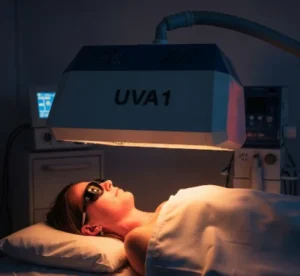Overview
Atelectasis is a condition in which part or all of a lung collapses or does not inflate properly, leading to reduced oxygen exchange. It is commonly seen after surgery, especially involving general anesthesia, but may also result from a blockage or pressure outside the lung. In Korea, early diagnosis and advanced pulmonary care help manage atelectasis effectively, minimizing complications.
What is Atelectasis?
Atelectasis occurs when the tiny air sacs (alveoli) in the lung become deflated or filled with fluid, leading to partial or complete lung collapse. It is not a disease but a clinical sign that may be caused by various underlying conditions. The condition can range from mild to severe and may occur in one part or an entire lung.
Symptoms
- Difficulty breathing or shortness of breath
- Rapid, shallow breathing
- Coughing (may or may not produce mucus)
- Low oxygen levels (hypoxemia)
- Chest pain or discomfort
- Fever (if infection is present)
- Increased heart rate
- Cyanosis (bluish skin or lips in severe cases)
Causes
- Airway obstruction: Caused by mucus plug, tumor, foreign object, or thick secretions
- Pressure on the lung: From fluid (pleural effusion), air (pneumothorax), or tumor
- Post-surgical effects: Especially after chest or abdominal surgeries with anesthesia
- Lung disease: Such as COPD, asthma, or pulmonary fibrosis
- Injury: Chest trauma or rib fractures
- Shallow breathing: From pain, sedation, or prolonged immobility
Risk Factors
- Recent surgery (especially abdominal or thoracic)
- Smoking or history of lung disease
- Use of sedatives or anesthesia
- Weak respiratory muscles
- Prolonged bed rest or immobility
- Age (older adults are more susceptible)
- Inhalation of foreign objects (common in children)
Complications
- Pneumonia due to trapped bacteria in collapsed lung tissue
- Low oxygen levels (hypoxia)
- Respiratory failure if widespread collapse occurs
- Bronchiectasis or permanent lung damage (in chronic cases)
- Increased hospital stay and recovery time after surgery
Prevention
- Deep breathing exercises after surgery (incentive spirometry)
- Early mobilization and walking after operations
- Coughing and chest physiotherapy
- Managing pain to allow deep breathing
- Quitting smoking before surgery
- Monitoring and treating airway secretions or blockages promptly
Treatment Options in Korea
South Korea offers world-class respiratory and post-operative care, utilizing modern diagnostic tools and evidence-based therapies to manage atelectasis effectively.
1. Diagnosis
- Chest X-ray: The most common tool to confirm lung collapse
- CT scan: For detailed imaging of lung structure and blockages
- Bronchoscopy: To locate and remove obstructions inside the airway
- Oxygen saturation tests: To monitor blood oxygen levels
2. Medical Management
- Oxygen therapy: To improve oxygen levels during recovery
- Bronchodilators: To open airways if bronchospasm is present
- Mucolytics: To thin mucus and aid clearance
- Antibiotics: If infection such as pneumonia is suspected
3. Physiotherapy and Support
- Chest physiotherapy: Including postural drainage and percussion
- Incentive spirometry: Encourages deep breathing to reinflate lungs
- Positive pressure ventilation (CPAP or BiPAP): For more severe cases
- Airway suctioning: If mucus plug or secretions cause blockage
4. Surgical Intervention
- Rarely needed but may involve removing tumors, correcting airway abnormalities, or draining fluid around the lungs
5. Hospital Facilities
Leading Korean hospitals like Asan Medical Center, Severance Hospital, and Pusan National University Hospital offer:
- Pulmonary rehabilitation
- Minimally invasive bronchoscopy
- Post-operative respiratory support unit













